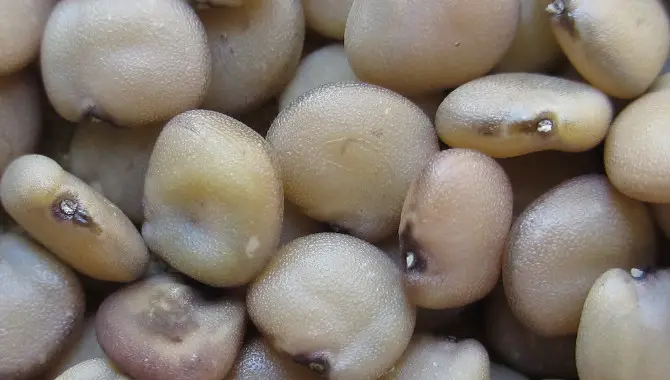The humble guar bean may not look terribly exciting but it’s the source of an extremely versatile food ingredient. Cultivated traditionally in India and Pakistan, the guar bean plant produces fruit that looks rather like undersized green string beans. They’re small, bitter and perhaps not immediately inspiring. Yet guar gum, a derivative of the guar bean plant, is a very useful foodstuff. It’s found extensive use in gluten-free food production, as its sticky, binding qualities are the ideal replacement for the stretchy protein. Guar gum has also found favor in vegan and vegetarian cuisine as a replacement for gelatine.
Is guar gum vegan? Yes, guar gum is completely vegan. It’s a cruelty-free plant-based ingredient, entirely suitable for any kind of vegan diet. Guar gum can be used as a gelling agent, a thickener and a gluten replacer in many of your favorite vegan recipes, including jellies and confectionery.
You’ve arrived on this page because you have questions about guar gum and its place in the vegan diet.
- Is guar gum vegan?
- What is guar gum made from?
- How is guar gum used in vegan foods?
- Where can you buy guar gum and how do you prepare it?
- Is guar gum healthy?
- What is the difference between guar gum, xanthan gum and agar-agar?
Fortunately, you’ve come to the right place. We have all the answers you’re looking for. Keep reading to find out everything you need to know about guar gum as a vegan food ingredient.
Is guar gum vegan?
Yes, guar gum is 100 percent vegan. It’s produced from the guar bean plant. Extracting and refining the gum is a cruelty-free process involving no animal ingredients. As a traditional foodstuff, animal testing of guar gum is not a concern for the ethical vegan. It’s environmentally friendly and a portion of safe, healthy food.
The guar bean has been cultivated in Asia since time immemorial. Its properties as a source of guar gum have been known for thousands of years. Guar gum features in countless traditional Indian and Pakistani recipes, from sweets, puddings and drinks to bread and other baked goods. In more recent times, the guar bean has found favor outside of Asia. It’s now widely cultivated as far afield as Australia, the Americas, and even parts of Africa. Its versatility has made guar gum a major ingredient in commercial food manufacture. As a vegan, you may well have consumed guar gum without even knowing it.
In its natural state, guar gum is a fine white powder. It resembles cornflour or any other fine flour but behaves very differently. Guar gum is freely soluble in water and is very easy to work with, although extremes of heat can sometimes have an adverse effect on it.
Guar gum is a very effective thickening agent and can be added in virtually any quantity without impairing the flavor of the food or drink it’s added to. It does not have a particularly strong taste and, when dissolved, has no real color. In any case, you don’t need very much guar gum to produce the right thickness. To make a vegan jelly dessert, for example, you only need one-sixth as much guar gum as you would use gelatine.
Guar gum is particularly important to vegans because it can take the place of so many animal products. Guar gum is used in place of gelatine because when blended with water it behaves in a very similar way. Guar gum is also used to improve the consistency of products such as nut milk and other plant-based milk or cream substitutes. Without some kind of thickener, plant-based milk doesn’t have the consistency or mouthfeel of dairy products and can seem “thin” or “watery” to those who aren’t used to them. The addition of a little guar gum increases their viscosity and makes these products much more similar in texture to the dairy products they’re intended to replace. Guar gum helps stop plant-based milk from curdling in hot drinks and provides a smooth, unctuous texture to plant-based faux creams.
As well as being suitable for vegan diets, guar gum has the added benefit of being useful to those on a gluten-free diet. It doesn’t behave quite like gluten but it does provide a useful stabilizing agent for bread, cakes, baked goods, and noodles or pasta. Guar gum allows items made with gluten-free flour to hold their shape and consistency better, keeping them firm and preventing them from crumbling or disintegrating.
Is guar gum healthy?
Yes, guar gum is perfectly healthy. In fact, it can reasonably be classified as whole food. Although there’s a degree of processing required to derive guar gum from the guar bean plant, it’s still a perfectly healthy foodstuff. Whether or not you put much stock in food standards agencies, it’s worth noting that guar gum has been deemed safe by both the FDA and the fairly strict EU food standards bodies. If you live in Europe, you may already have consumed guar gum under the designation E412.
Guar gum is at least a health-neutral ingredient, producing no known ill-effects when consumed as part of your normal vegan diet. In fact, it may be actively good for you. While the science at this point remains tentative, it seems that guar gum can slow down the absorption of sugars by your gut. This is good news for people who need to watch their blood sugar. The downside is that very large doses of guar gum — far more than you’d consume as part of your normal daily diet — can block the uptake of nutrients.
Guar gum was once touted as a quick weight loss remedy because of its ability to slow down or block the absorption of sugars; however, in dangerously and unusually large doses, it can also block nutrients that your body needs. The FDA has now banned weight loss treatments with guar gum because of this issue. In the amounts usually found in vegan foods, though, guar gum poses no hazards and may be positively beneficial.
People with gastrointestinal conditions may benefit from guar gum.
In particular, people with IBS have reported experiencing relief from their symptoms after incorporating guar gum into their diets.
Where can I buy guar gum?
If you’ve been a vegan for any length of time, there’s a very good chance you already have. This versatile ingredient pops up in nut milk, smoothies, snacks, desserts and all kinds of vegan foods; you’ve probably enjoyed guar gum in your coffee, your yogurt or your vegan dips and spreads.
If you want to use guar gum in your home recipes, it’s very easy to come by. You can find it on the shelves of most stores selling vegan foods. Virtually any health food store will carry powdered guar gum and you can often find it in large supermarkets. It’s frequently sold in Asian food stores too. You might find guar gum packaged as “vegetable gelatine substitute” or something similar. It’s very inexpensive and, as mentioned, a little will go a long way.
You can also buy powdered guar gum online. It keeps well and travels well too so it’s a popular product for online vegetarian and vegan stores. Most packaged guar gum will come with instructions as to how you should use it; you can also find plenty of useful recipes online and in vegan cookbooks.
Guar gum is sold as a white powder. Some manufacturers helpfully package it into sachets, with each portion being equivalent to a certain amount of gelatin. If you buy guar gum in bulk form, you’ll have to measure it yourself. Most recipes will tell you how much you need. You will usually only need a teaspoonful or so for most recipes, although large batches may require more. A packet of guar gum is a great staple for your larder if you’re a vegan who enjoys cooking.
Is guar gum the same as xanthan gum? What about agar-agar?
Although they may seem similar, guar gum, xanthan gum and agar-agar are different substances. They are often used in similar ways but have somewhat different origins and properties.
Xanthan gum is very similar to guar gum in terms of its physical properties but comes from a very different source. Xanthan gum is produced via a fermentation process using the Xanthomonas campestris bacteria. In general, they can be used more or less interchangeably. However, xanthan gum is a little better at handling high temperatures; if you’re baking at home, you may find it gives better results than guar gum. For your cold dishes and candies, though, guar gum is usually superior.
Agar-agar is also a plant-based gelling agent. Instead of a bean, though, agar-agar comes from a type of seaweed. Agar-agar is used in lots of Asian recipes but is sometimes a little hard to come by in stores. It may also be more expensive than guar gum, depending on where you’re located. If a recipe calls for agar-agar and you can’t get hold of any, guar gum is usually a perfect substitute.
If you’ve ever studied biology, you may have come across the agar-agar in the context of bacterial cultures. Funnily enough, guar gum has a role to play here as well. Some scientists are now using guar gum in place of the more traditional agar plates due to its ease of availability and lower price.
Another type of vegetable gum often used in place of gelatine is carrageenan. This gelling and emulsifying agent is derived from seaweeds, like agar-agar. Although it’s been in use for some centuries, carrageenan has fallen out of favor in recent years as it may cause gastrointestinal problems. This is in contrast to guar gum, which has a beneficial effect on some GI issues.
Welcome to VeganClue - My name is Robert Van De Ville and together with my team we spent hundreds of hours researching the most relevant topics for Vegans and non yet Vegans. Are you looking for more information about Veganism, animal welfare, diet, health, and environmental benefits of the Vegan lifestyle? You are in the right place! Enjoy the site.

